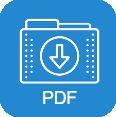How do you properly install and maintain self-lubricating bearings
Author:admin Date:2023-10-25
Proper installation and maintenance of self-lubricating bearings are essential to ensure they perform optimally and have a long lifespan. In this expanded article, we'll delve deeper into the installation and maintenance processes for self-lubricating bearings, highlighting key points and providing additional insights.
Installation:
1. Cleanliness:
Before installing self-lubricating bearings, it's vital to have a clean and contamination-free environment. Ensure that the installation area is free from dust, dirt, debris, or any foreign particles that could compromise the bearing's performance. Contaminants can lead to premature wear and damage.
2. Proper Fit:
Select the correct bearing size and ensure it fits securely into the housing or shaft. Avoid using excessive force during installation, as it can cause deformation and damage to the bearing. Refer to the manufacturer's specifications to determine the proper fit and installation procedure.
3. Lubrication:
Self-lubricating bearings are specifically designed to operate without additional grease or oil. Applying lubricants during installation is unnecessary and can disrupt the bearing's built-in lubrication system. Over-lubrication can lead to inefficiency and even damage.
Maintenance:
1. Regular Inspection:
Frequent inspections are crucial to monitor the condition of self-lubricating bearings. Look for signs of wear, damage, or contamination. Excessive play, unusual noise, or vibrations are indicators that the bearing might require attention. Periodic inspections can help identify issues early and prevent more extensive damage.
2. Cleaning:
In the event of contamination, use a mild detergent or solvent recommended by the manufacturer to clean the bearing. Avoid using harsh chemicals that may damage the bearing material or its lubrication system. Proper cleaning helps restore the bearing's functionality and extends its service life.
3. Lubrication Replenishment:
Self-lubricating bearings have integrated lubrication systems, but over time, the lubricant may deplete. Follow the manufacturer's guidelines for lubrication replenishment, if necessary. It's important to use the recommended lubricant and adhere to the specified intervals for replenishment to maintain optimal performance.
4. Temperature Monitoring:
Regularly monitor the operating temperature of the bearing. Elevated temperatures can degrade the lubricant and negatively impact the bearing's performance. If the temperature exceeds the recommended limit, investigate the root cause, which could be excessive friction, misalignment, or overloading, and take appropriate action to rectify the issue.
5. Replacement:
When self-lubricating bearings exhibit substantial wear, damage, or fail to perform as expected, it may be necessary to replace them. Follow the manufacturer's recommendations for replacement intervals, which are typically based on factors such as operating conditions, load, and bearing type. Timely replacement ensures the continued reliability of the equipment.
In summary, self-lubricating bearings offer advantages in reduced maintenance requirements and extended service life. Proper installation and diligent maintenance are critical to harness these benefits fully. By adhering to cleanliness, correct installation procedures, and regular inspections, you can ensure that your self-lubricating bearings continue to perform efficiently over the long term.



 English
English Español
Español Deutsch
Deutsch
















